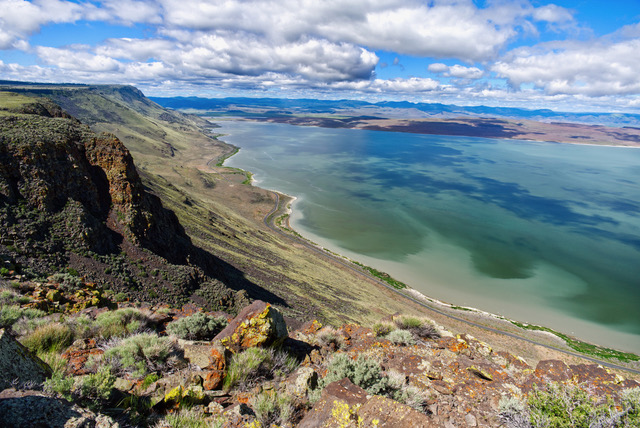In the southeastern corner of Oregon, a hidden wonder shimmers — Lake Abert.
When full, Lake Abert covers 65 square miles and is the sixth largest lake in Oregon. It is as shallow as it is broad, just 5 feet deep on average. It is the only hypersaline lake in Oregon, and one of just three hypersaline lakes in the U.S.
Lake Abert provides a crucial pitstop for migratory birds that traverse the Pacific Flyway and replenish their energy by feasting on the alkali flies and brine shrimp that are adapted to live in this hypersaline environment. With huge flocks of shorebirds, waterbirds and waterfowl all congregating here at once, it can be a pretty raucous place during the spring and fall migration.
Download the Lake Abert Avian Species Checklist
Located midway between the present-day towns of Burns and Lakeview, the Lake Abert area also boasts of a long history of use by Indigenous people. Artifacts, settlements, and petroglyphs dating back thousands of years found near the lake challenge the current understanding of the culture of the Chewaucan people.

